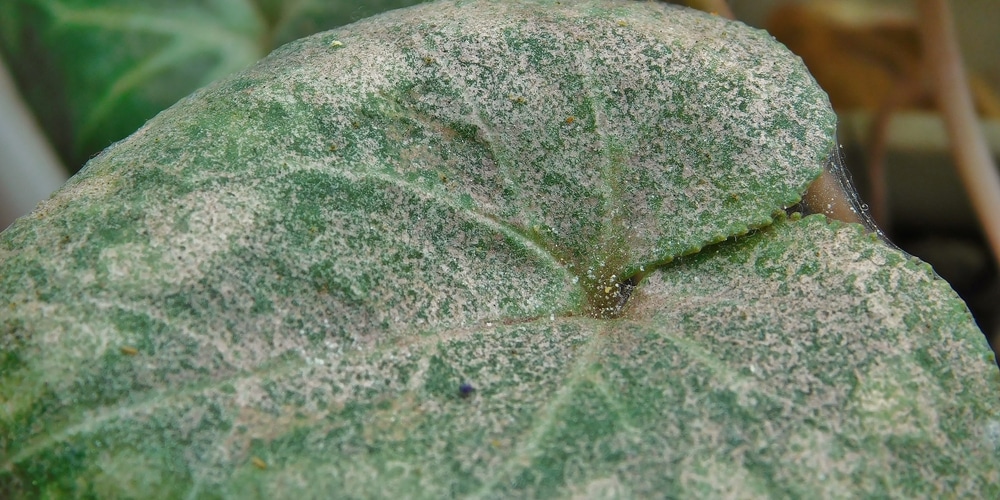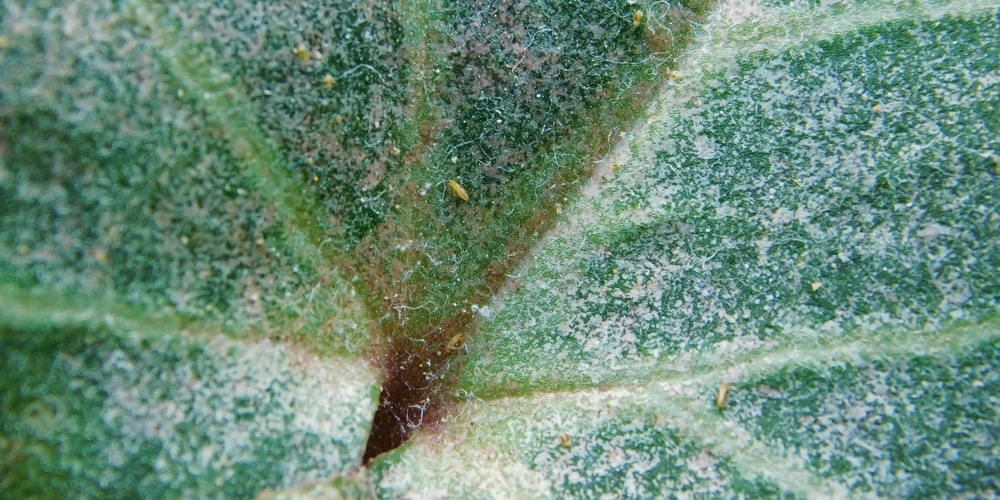Cyclamen mites are tiny pests that can infest both outdoor plants and houseplants. They are white, tan, or greenish in color and are too small to easily see without magnification, though they can usually be felt if they crawl on a human hand.
The pest has piercing mouth parts that it uses to suck fluids from plants causing the foliage to turn yellow and wilt. Let’s look at what a Cyclamen mite is and how to get rid of an infestation.
What are cyclamen mites?

Cyclamen mites are a common pest of both houseplants and outdoor plants. They are particularly common on cyclamen plants, which is how they get their name. These pests also affect strawberry plants, African violets, begonia, snapdragon plants, gerbera, ivy, and tropical houseplants plants.
These insects are tiny, even being too small to easily see with the naked eye as they measure about 1mm long. Mites do not have antennae or wings, but they move quickly. Cyclamen mites can be white, tan, or greenish and may even look transparent.
Cyclamen mites are sap-sucking insects that aren’t usually noticed until they cause significant damage to the plant. Infested foliage will look yellow and wilted. The leaves may also turn brown along the edges. An infestation may cause the entire plant to die. Cyclamen mites are common houseplants pests that can be difficult to control, but they’re not usually harmful to humans.
How do plants get cyclamen mites?

Cyclamen mites are sometimes accidentally introduced into the home with a new houseplant or outdoor plant. They can also travel on pets, clothing, or tools that have been outdoors where plants are common. Cyclamen mites may be more of an issue in some areas than others; for example, they’re not usually a problem in cooler climates where plants go dormant in winter.
How do you get rid of cyclamen mites?
Since infested plants are sometimes sold at garden centers, check new plants before bringing them home. If your plant is infested, remove the entire population of pests by gently washing the leaves with soapy water and killing any that fall into the sink or tub; use a strong spray to blast off offending bugs on outdoor plants.
You can also use pesticides if you see mites crawling on the upper surfaces of plant leaves or any signs that bugs may have moved into leaf axils. Treat plants outdoors by spraying with a ready-to-use horticultural oil mixed according to package directions; this will smother pests living under the surface of leaves.
Treat indoor plants with neem oil mixed according to label directions, and be sure to cover the entire plant. If plants remain infected even after treatment, discard plants or repeat treatment in 7 days and maintain a clean environment to prevent re-infestation.
Conclusion
Cyclamen mites can be quite a nuisance for any indoor or outdoor plant they happen to infect as the pests suck vital nutrients from the roots, causing damage and even death if not dealt with.
It’s best to treat infested plants as soon as possible, especially if you have a large garden that may have been exposed to them at some point. Treatment will ensure these insects don’t spread to other plants.